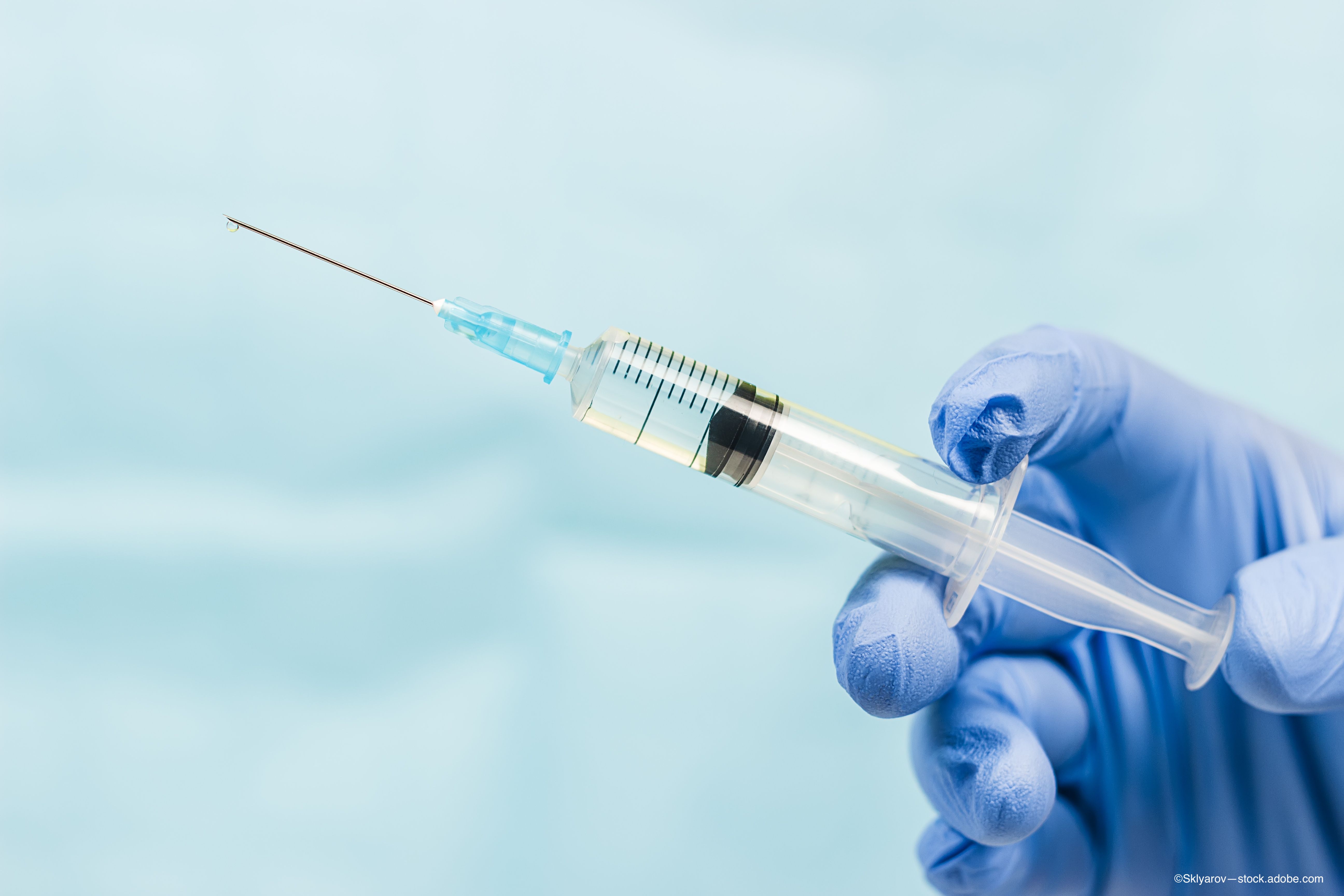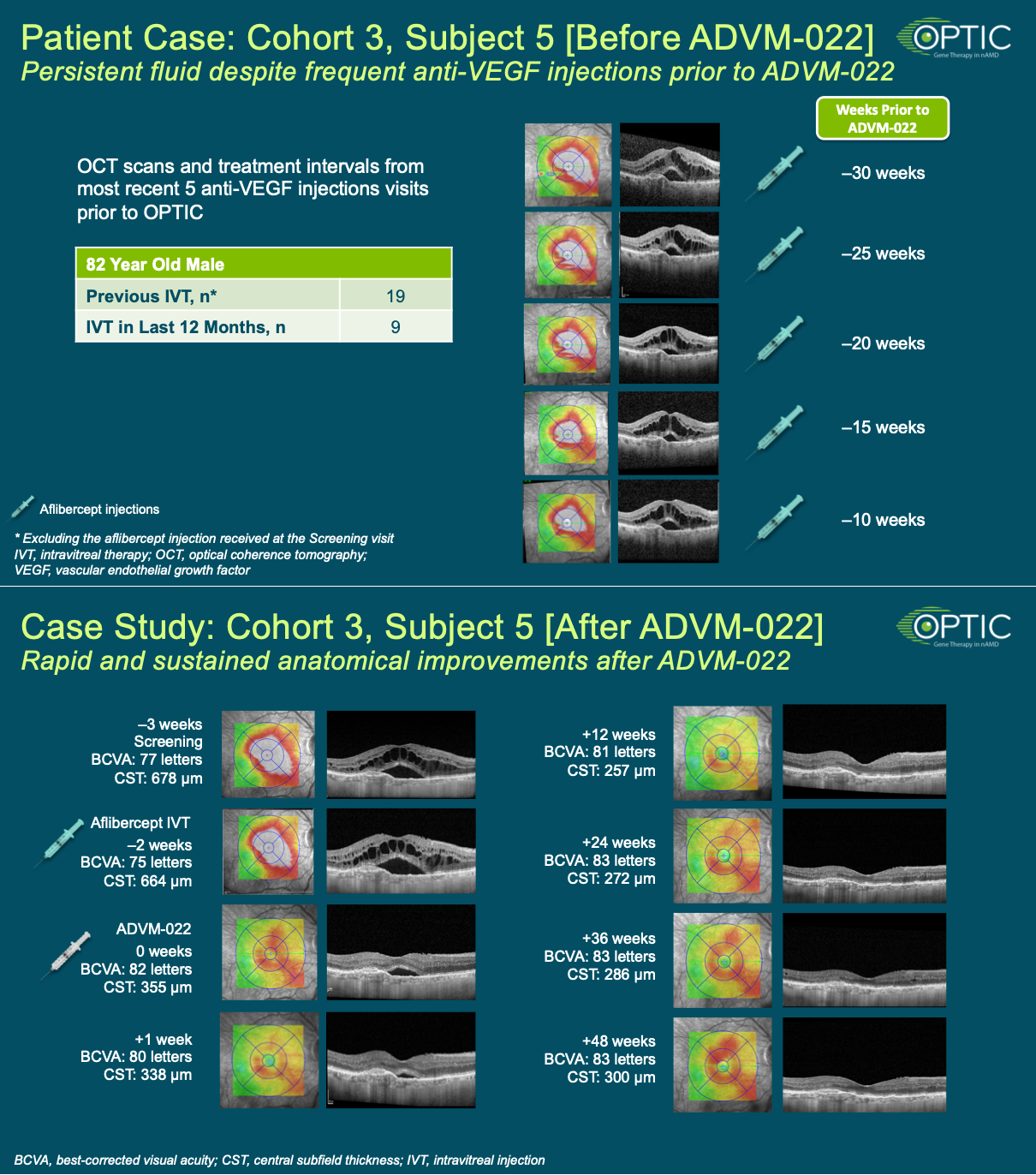Gene therapy for nAMD maintains vision with single injection
In a study, a single intravitreal injection of ADVM-022 had a 99% reduction in the mean annualized frequency of anti-VEGF injections.

Reviewed by Arshad M. Khanani, MD, MA
ADVM-022 (AAV.7m8-aflibercept; Adverum Biotechnologies, Inc), an adeno-associated virus gene therapy vector developed to treat neovascular age-related macular degeneration (nAMD), diabetic retinopathy, and diabetic macular edema (DME), was shown in nAMD patients (OPTIC Phase 1 study; NCT03748784) to be well tolerated and effective with a long treatment duration and associated with substantial reduction in treatment burden with 1 intravitreal injection of the drug.
The platform was designed to facilitate continuous, stable delivery of aflibercept (Eylea; Regeneron) during an in-office intravitreal injection, according to Arshad M. Khanani, MD, MA, clinical associate professor, University of Nevada, Reno School of Medicine, Reno, who reported the study results on behalf of the OPTIC investigators. “It is exciting that intravitreal gene therapy with ADVM-022 has the potential to address the unmet need of durability of the currently available agents,” he said. “An intraocular antivascular endothelial growth factor [VEGF] biofactory is established in the eye after a single intravitreal injection.”
Related: Wet AMD treatment burden eased by nonviral gene therapy
The 2-year OPTIC phase 1 study included 4 cohorts of previously treated patients with nAMD: cohorts 1 (6 patients) and 4 (9 patients) received the high dose (6×1011 vg/eye), and cohorts 2 (6 patients) and 3 (9 patients) received the low dose (6×1011 vg/eye). The primary outcome was the safety and tolerability of 1 injection of ADVM-022, and the second objectives were assessment of the best-corrected visual acuity (BCVA), anatomic outcomes of spectral-domain optical coherence tomography, and the need for anti-VEGF supplemental therapy.
Different steroidal prophylaxis was used among the cohorts. Previously, a 13-day oral steroid tapered eye drop was used in cohorts 1 and 2; in cohorts 3 and 4, a 6-week steroid eye drop course is being used. The patients had been previously treated with from 20 to 30 injections to maintain vision (ie, average, 9 injections in previous year in cohorts 1, 2, and 3, and 7 injections in cohort 4). This is a difficult-to-treat patient population requiring frequent injections to maintain vision. The cohorts were similar in demographic data; cohort 3 had thicker central subfield thickness (CST) at baseline.
Related: Research focuses on anti-VEGF treatment lapses in retinal vein occlusion
Results

Following a single intravitreal injection of ADVM-022, the high-dose cohorts had a 99% reduction in the mean annualized frequency of anti-VEGF injections and the low-dose cohorts had an 85% reduction in treatments. “Over 80% of patients with nAMD treated with a single injection of ADVM-022 in OPTIC have not needed any supplemental anti-VEGF injections up to 92 weeks’ follow-up,” Khanani said.
Related: AAO 2020: Considerations when using anti-VEGF for treating AMD
No serious adverse events were reported in association with ADVM-022. Events that did occur were mild or moderate. When observed, ocular inflammation predominately affecting the anterior segment was responsive to steroid eyedrops; no posterior inflammation, vasculitis, or endophthalmitis have been reported. A decreasing trend in the aqueous cell grade was seen over time. The lower dose was associated with fewer cases of inflammation.
The BCVA and CST in cohort 1 remained stable without supplemental treatment at a median 86-week follow-up; in cohort 2, the BCVA and CST were maintained over a median 64-week follow-up; in cohort 3, the BVCA was maintained and the CST improved with a median 48-week follow-up; and in cohort 4, the follow-up is too early for definitive findings.
Related: ASRS 2020: PDS with ranibizumab signals paradigm shift in treatment of neovascular AMD
The key takeaways from the OPTIC trial are the following:
- ADVM-022 is well tolerated at both doses investigated.
- The efficacy was robust and sustained at high and low doses.
- One intravitreal injection of ADVM-022 remained efficacious out to 92 weeks without the need for supplemental injections in cohort 1.
- Robust expression of aqueous anti-VEGF protein was seen at 18 months in cohort 1 after 1 injection.
- ADVM-022 resulted in a substantial reduction in the number of annual injections.
- Most patients in the OPTIC trial are free of supplemental injections.
- These results warrant future larger studies.
Pivotal trials are scheduled to start later in 2021. The data from the ongoing INFINITY phase 2 study (NCT04418427), the first study to evaluate an ADVM-022 gene therapy in DME, will be reported later in 2021.
Arshad M. Khanani, MD, MA
Email: arshad.khanani@gmail.com
This article is adapted from Khanani’s presentation at the Bascom Palmer Angiogenesis, Educations, and Degeneration virtual conference. Khanani is a consultant to and receives grant support from Adverum Biotechnologies.
Related Content: Retinal Surgery | AMD | Diabetic Macular Edema | Ophthalmology
